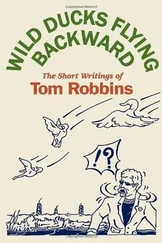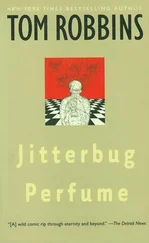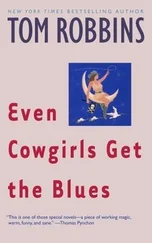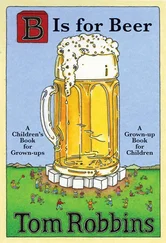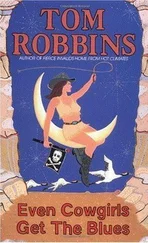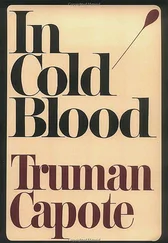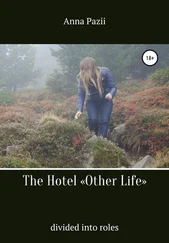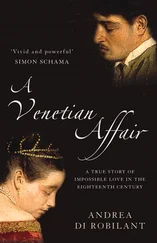Eileen’s car was barely out of the driveway before — vacillating between heartbreak and relief — I drove over to the Pizza Haven in the University District and (figuratively speaking) wrapped up the joint’s cutest waitress in a checkered napkin and brought her home. Terrie Lunden had been flirting with me outrageously every time I went in for a pizza. She’d attended a lecture on experimental theater I delivered at Seattle’s Free University and had developed a crush on me that evening. I didn’t remember her from the class, but at the Pizza Haven she was hard to ignore. Always smiling, constantly cheerful, Terrie was as easygoing and uncomplicated as Eileen was challenging and complex. As an anecdote, a relief package, she struck me as an ideal companion for my projected road trip to the Southwest desert.
We never made it to Arizona. Stopping by San Francisco to pay respects, we remained there for a month, sleeping and eating (tomato sandwiches, naturally) in the back of that old silver panel truck, parked on a side street in the Haight-Ashbury, too mesmerized by the scene thereabouts to any longer consider Tucson or Sedona. We visited museums, City Lights Bookstore, and the waterfront; danced to throbbing amoebas of light at the Fillmore and Avalon ballrooms (children and dogs scampering in and out among the dancers), but mostly we wandered the Haight, where there seemed to be no end to the spectacle, the psychedelic parade, the blossom-choked river of liberated meat. More than the ubiquitous costumes representing a multitude of periods and exotic lands; more than the relaxed smiles, blatant sexuality, and free-flowing gender-bending tresses, what impressed me most was the genuine spirit of caring and generosity emanating from virtually everyone I met.
Should I admire a passerby’s Edwardian waistcoat or Japanese silks, that fellow would insist that I have it, a stranger would literally give you the shirt off his back. If, on a hot street, I’d glance appreciatively at someone’s ice cream cone, she’d offer me a lick or else thrust the whole cone in my hand. The Haight was awash in Christian charity. These kids, simultaneously jubilant and introspective, were practicing what their elders preached. The Haight was the New Testament: animated, activated, brought to life in living color. The naïveté was so thick you could cut it with a Popsicle stick — but so apparently was Christ’s. Years later, on a wild African savannah a hundred miles from even the crudest settlement, a pride of lions on one horizon, a solitary giraffe on another, I said to myself, “This is the way the world was meant to be and everything else is a mistake.” I’d thought the exact same thing in San Francisco during the Summer of Love.
Oh, and yes, by the way, I did search for at least a glimpse of Eileen in the exultant throngs along the Haight. She never appeared.
When, upon my return to Seattle, I actually sat down and commenced writing that first novel, I set no scenes in Haight-Ashbury. There were no light shows in my narrative, no love-ins, street theater, free clinics, demonstrations, rock festivals, or other public celebrations. My goal, as previously stated, was not to describe the sixties phenomenon as a journalist or historian might, but rather to encapsulate it, privatize and personalize it; boil it down to a reduction, distilling its esoteric yet peculiarly American rapture and uncorking that essence within the confines of a hot-dog-stand-cum-roadside-zoo in rural, rainy Washington state.
To fortify that distillation, I did from time to time make use of a collage technique, whereby I would skim through the underground press, KRAB radio program guides, political and poetry broadsides, concert fliers, even letters from friends, and try to pluck some quaint item or revealing image that, though taken out of context, might add historical weight when pasted into my more intimate, internalized portrait of the period. (In my second novel, the twilight-of-the-sixties’ Cowgirls, I would continue to collage occasionally, but only in regard to the book’s male protagonist, the Chink, who was partially inspired by R. Crumb’s crusty old cartoon antihero, Mr. Natural, and partially based on the subject of a prank “news” article that Paul Dorpat anonymously wrote and planted in his Seattle alternative weekly, the Helix. )
As Professors Purdon and Torrey suggest in a lengthy interview with me ( Conversations with Tom Robbins, University of Mississippi Press, 2010), much of the content and style of Another Roadside Attraction, as well as of the anthropological and mythological aspects of the age in question, are personified in the novel’s two main protagonists, Amanda and John Paul Ziller. Both characters could be considered archetypes: the loinclothed, flute-tooting Ziller an Orpheus figure, using his music, his art to simultaneously charm the world and retaliate against it, all the while identifying with another place, a distant time; Amanda, a manifestation of the universal goddess (maiden, slut, and mother/wife), as connected to the earth as any mushroom, though given to innocently flitting about its posies like a butterfly. She’s wise, yet also naive, he’s playful yet also dark; and something strangely meaningful seems to cling to them.
All that sixties phantasmagoria was well and good — fun to write, important to consider — but remember, the center pole supporting this show, its fulcrum, was to be a certain mummified corpse. Since the very foundation of what many call Western civilization is its faith in the divinity and immortality of the man some call Jesus Christ, what would it say about the future of that civilization, about its ethics, morality, belief system, history, moods, and general psychic health if it could be irrefutably demonstrated that Jesus was not immortal, had not risen from the dead, and that the Church of Rome had been concealing proof of its presumed Savior’s fallibility for more than seventeen hundred years? My goal was to examine the ramifications of that question, and to incorporate them within a lively narrative constructed of incremental flashes, some which would illuminate and advance the plot, some which (I hoped) would illuminate and advance the reader.
Distractions still abounded, but in the autumn of ’67 I mailed off thirty pages to Luther Nichols in California. He read them approvingly and sent them on to New York. I was fishing for a monetary advance. It was only then that I learned that Doubleday had begun as a Roman Catholic publishing house. A number of senior editors, holdovers from that period, were appalled by my manuscript’s premise, baffled by its form. So, no contract, no money. Encouraged by Mr. Nichols, however, I persisted — until eventually, sometime in ’68, I had written seventy pages more. These, too, Luther Nichols forwarded to New York.
This time I was told that the younger editors at Doubleday loved what and how I’d been writing, but had failed to convince their superiors to spring for it. The elders had softened their initial objections, but complained that they couldn’t tell where the book was going. Really? Welcome to the club. Except perhaps down in the shadowy catacombs of my subconscious, I didn’t know where it was going either. Moreover, I didn’t want to know. Discovery was part of the process, was what enthralled me, made writing an adventure instead of a drudgery, a journey instead of a job. It was V. S. Naipaul who said, “If a writer knows everything that’s going to happen, then his book is dead before he begins it.” In any case, my disappointment was offset by the fact that now, a hundred pages into the book, it had taken over my life, had assumed a life of its own. I couldn’t have stopped it with an atom bomb.
At this juncture, to move forward, two things were required. I needed to pry myself loose from Seattle’s art community and I needed sufficient income to charm the groceries. As if on cue, the gods grinned. First, I landed a weekend gig on the copy desk of the Seattle Post-Intelligencer . Then, Terrie’s sister offered us cheap living quarters in the little town of South Bend, Washington, a waterfront village physically not unlike La Conner (where I hadn’t been able to find a rental I could afford), but almost La Conner’s opposite in temperament, the one boasting a concentration of artists and an unusually high level of sophistication; the other quite crimson in the hue of its necks, populated with hard-drinking loggers freighting a logger’s sublimated guilt.
Читать дальше

